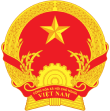Plastic and rubber industry sees sustainable growth
VGP – Reporting an average growth of 12-15% per year and accounting for 6.7% of the country’s gross domestic product (GDP), Viet Nam’s plastic and rubber industry is assessed to have huge potential for businesses to continue investing and exploiting the market.
 |
|
The group of plastic and rubber products has contributed significantly to the industry’s common results as it joins the groups of commodities with an export value of hundreds of millions of US dollars |
As shown from statistics, Viet Nam has now exported its plastic products to 150 countries around the world.
In 2018, the major exporting markets of Vietnamese plastic products remained Japan, the European Union (EU), the United States, ASEAN, the Republic of Korea (RoK) and China.
In particular, exports to Japan reached the highest revenue of US$671.76 million, up 18.8% year on year and accounting for 22.2% of the total. Exports to the EU came in second place with US$602.05 million, up 6.6% year on year and representing 19.8% of the total.
Production of plastic products in 2019 is forecast to reach 8.9 million tons, a growth of 7.2% compared to 2018. Viet Nam’s plastic industry is expected to maintain an average growth momentum of 6.5% per year for the 2019-2023 period.
According to experts, Viet Nam’s signing of free trade agreements (FTAs) has brought many opportunities for exporters of plastic packaging products. Partners are gradually shifting orders from China to Viet Nam to take advantage of cheap production costs and tax incentives for exports to the RoK, Japanese and EU markets.
Similar to the plastic industry, Viet Nam’s rubber industry has also been developing in a sustainable manner, with its products exported to many countries around the globe.
In 2018, natural rubber is Viet Nam’s fifth largest agricultural product in terms of export value, with US$2.1 billion.
Many Vietnamese rubber products were exported to the major markets such as the U.S., Malaysia, Belgium, Germany, Brazil, Japan and Thailand.
In 2019, Viet Nam’s rubber industry has risen to second place in terms of productivity, third in output and fourth in export revenue in the world natural rubber market.
The Viet Nam Rubber Association said it would join its members to participate in the projects on improving the value added and developing the intensive processing industry planned for the rubber industry by the Government.
At the same time, the association will strengthen international cooperation with countries producing and consuming natural rubber to co-develop sustainably, on the basis of balancing supply and demand, ensuring reasonable income for rubber growers and participating in the global rubber value chain.
Viet Nam is witnessing the strong participation of foreign businesses in the supply of machinery, equipment and materials for the plastic and rubber industry.
Through trade fairs, foreign exhibitors have the opportunity to approach the production enterprises, both at home and abroad, to promote their products, expand their markets, advertise their brands, establish partnerships and seek new business opportunities in the Vietnamese market.
By Vien Nhu
